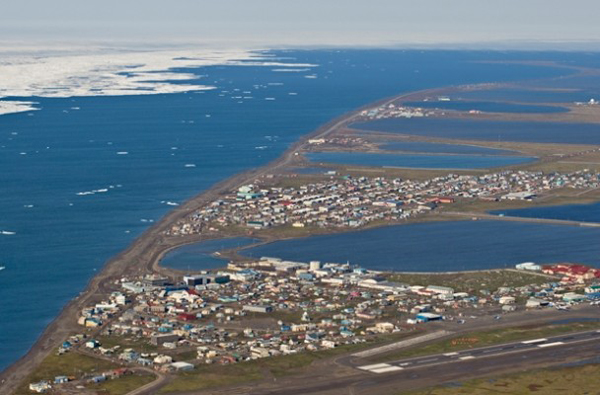
Residents of Utqiagvik have experienced above normal temperatures for the last 17 months. But a cooler-than-normal June will end that streak.
Brian Brettschneider with our Ask a Climatologist segment says the rest of the state has drifted back toward normal temperatures this year, after spending several years in above normal territory.
But he says Utqiagvik stayed warm — until this month.
Interview Transcript:
Brian: They’re going to break their 17 month string of above normal months and end up just probably about one degree below normal. So for them they get to experience what the rest of the state has so far in 2017.
Annie: How significant was that streak?
Brian: Well 17 months, that’s a long streak. I believe that’s the currently longest streak in the United States. There’s a few places in, say, Minnesota and in the southeastern lower 48 that that are running about 12 months in a row above normal. But 17 is a long time. It’s quite the statistical anomaly to be that above normal for that many months in a row. So it’s very noteworthy.
Annie: What about the rest of the state this summer, how are temperatures shaping up?
Brian: We consider June the first traditional month of the summer and we have both extremes in the state. On the North Slope, they’re a little bit below normal. And then down in southeast from Juneau southward, they’ve been a little bit below normal. And then everyone else is at, or slightly above, normal. Anchorage is about half a degree above normal. Fairbanks, Bethel and McGrath are about two degrees above normal. And then over on the west coast in Nome and Kotzebue, it’s about five degrees above normal. So even though in some respects it’s kind of felt like a cool start to the summer, we’re actually running a little bit above normal.
Annie: I think people in Anchorage will say you’re crazy to suggest we’re having even a little bit warmer than normal summer.
Brian: We’ll oftentimes think of how many 70 degree days we’ve had here in Anchorage. We’ve only had two so far. And normally we would have about five in by now and for the whole summer we’d have about 15 or 16. So sometimes people look at those warm events, those outlier events, and that’s their metric on whether it’s been an above-normal-temperature summer or below normal. You can actually run above normal even without having your requisite number of so-called warm days.
Annie: Explain how the average daily temperature is calculated?
Brian: When we talk about how it’s been x degrees above or below normal, we’re not talking just about the high temperature. You add the high and the low together and divide by two. And from a climate point of view, from an ecological point of view, it’s that average daily temperature that really matters. So in Anchorage, our normal high is about 65 degrees this time of year. You can actually have a 65-degree high temperature and that same day be one or two degrees above normal because you haven’t looked at the low temperature yet. And if that’s running one or two or four degrees above normal then the whole day will run above normal.
So over the long term, we’ve actually seen more of an increase in our low temperatures than we have in the high temperatures during the summer months. So don’t just keep an eye on the high temperature. You also have to look at the low temperature to see how we’re doing from a climate perspective.
